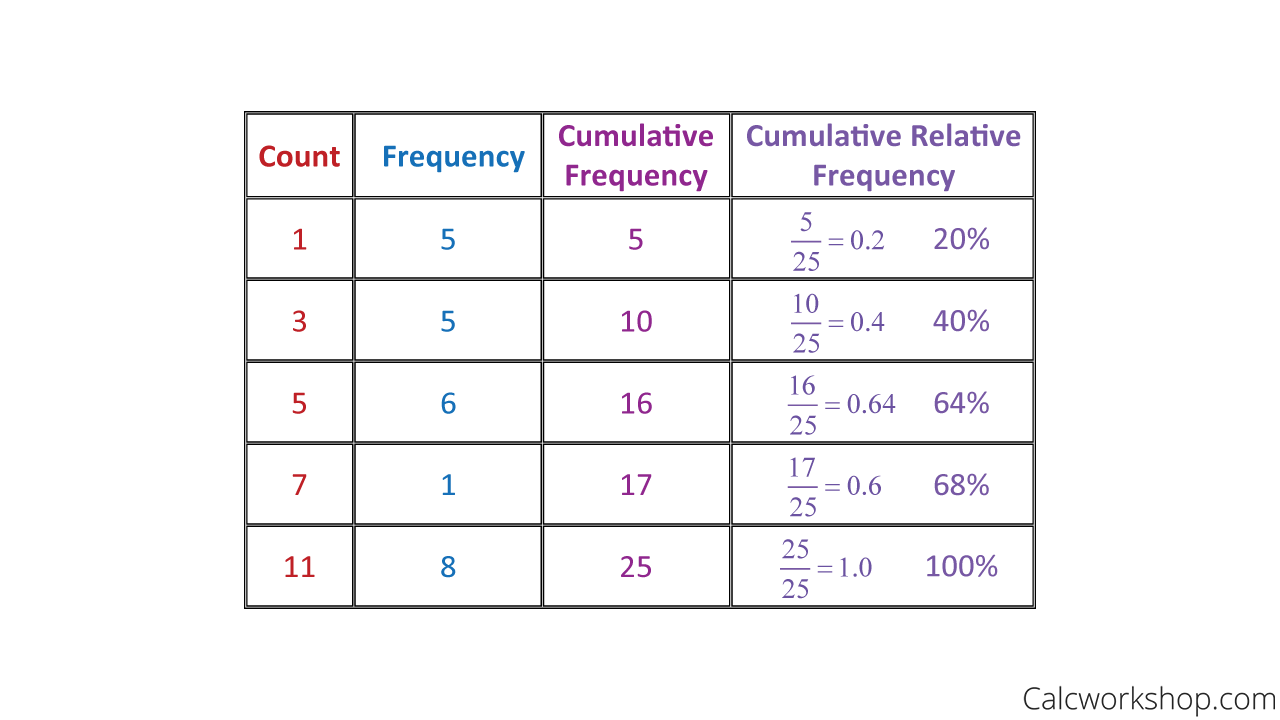How to Calculate Cumulative Frequency
To calculate the cumulative frequencies we simply add the frequencies in turn as we go down the values in the table. In this example Ill explain how to apply the table and cumsum functions to calculate cumulative frequencies in R.

How To Calculate Cumulative Frequency Table In Excel Geeksforgeeks
To find the cumulative relative frequencies.

. By summing the current and previous rows you calculate the running total. Representation of cumulative frequency graphically is easy and convenient as compared to representing it using a table bar-graph frequency polygon etc. Formula for Cumulative Frequency.
How do you calculate cumulative relative. So in G6 input the. First we need to calculate the first cumulative frequency which is always equal to the first frequency.
To calculate the cumulative frequency for a list of data values simply enter the comma-separated values in the box below and then click the Calculate button. Click on the Reset button to clear the fields and find the cumulative frequency for different data sets. Please follow the steps below to find the cumulative frequency.
Calculate cumulative frequency by starting at the top of a frequency table and working your way down. Cumulative frequency can also defined as the sum of all previous frequencies up to the current point. This calculation gives the cumulative percentage for each interval.
The result is then multiplied by 100. Cumulative frequency distribution curve or ogive of less than type. Calculate Cumulative Frequency Using table cumsum Functions.
Cumulative frequency is a measure of the total frequencies up to a certain point in a list of data values. Draw a cumulative frequency table for. Take each rows frequency and add all preceding rows.
The set of data below shows the ages of participants in a certain winter camp. Lets use this method to find cumulative frequency for discrete and continuous data. We can use the table function to create a cross-tabulation table showing the count or frequency of each value in our vector.
Then find the sum of all the data values up to and including the given. Enter the frequency data set separated by a comma in the given input box. Create a third column and label it Cumulative Frequency The cumulative frequency indicates the frequency of the value plus the frequencies of the previous values.
In this article we are going to learn about calculating the cumulative frequency for distribution using Microsoft Excel. To calculate cumulative frequency start by making a table showing the frequencies or how often each data value occurs. This is a normal frequency table showing the price of different chips and the percentage or frequency of sales.
We will be using the SUM function available in Microsoft Excel. Frequency Table for Cumulative Frequency. Cumulative frequency distribution curve or ogive of more than.
In this case 25 or cell F6. Click on the Calculate button to find the cumulative frequency. The Cumulative percentage column divides the cumulative frequency by the total number of observations in this case 25.
The frequency of an element in a set refers to how many of that element there are in the set. As we have seen from the above explanation cumulative frequency is actually the running total and involves addition operation. Calculate the cumulative frequency of each grouping.
The cumulative frequency graph can be plotted in two ways. For 1 the cumulative frequency is 2 because there are no values prior to 1.

How To Find Cumulative Frequency W 11 Examples

Cumulative Frequency Distribution Simple Definition Easy Steps


Comments
Post a Comment